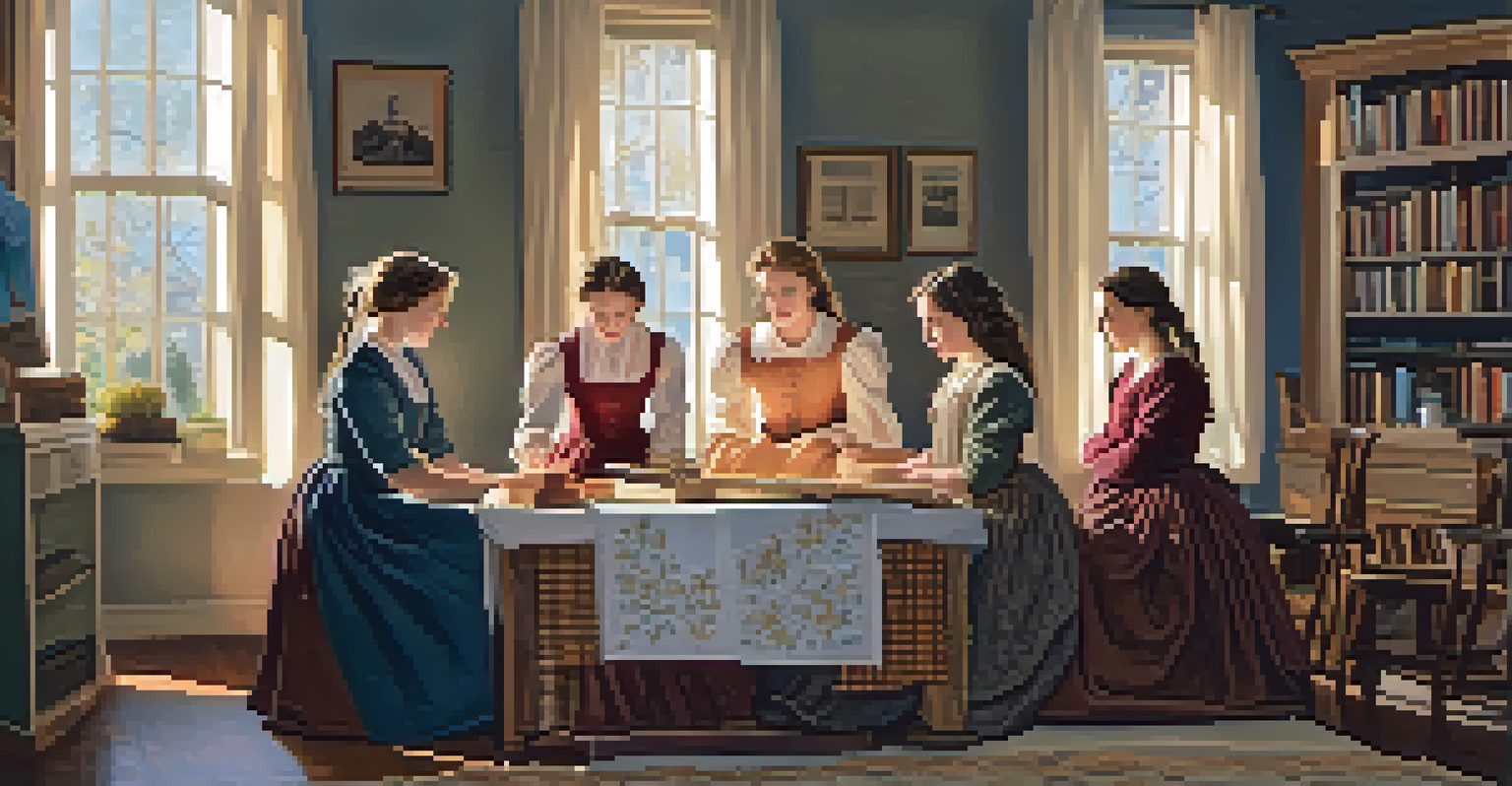Transformative Adaptations: When Films Create New Narratives

Understanding Transformative Adaptations in Film
Transformative adaptations occur when filmmakers take existing stories and reinterpret them, often altering key elements to resonate with contemporary audiences. This process can breathe new life into classic tales, making them relevant for today's viewers. For example, the film 'Romeo + Juliet' by Baz Luhrmann modernizes Shakespeare's tragic love story by setting it in a contemporary urban environment, complete with modern dialogue and visuals.
Adaptation is not imitation. It is a re-creation of a story that reflects the time and culture in which it is produced.
Such adaptations challenge the notion of fidelity to the source material; they prioritize emotional truth and cultural significance over strict adherence to the original text. By doing so, filmmakers not only engage new viewers but also invite discussions on the themes and messages of the original work. This creative freedom can lead to unique interpretations that may even surpass the original in popularity.
In essence, transformative adaptations serve as a bridge connecting past narratives with present realities, demonstrating that stories can evolve while still honoring their roots. This evolution is not merely an artistic choice; it's a reflection of changing societal values and norms. As we delve deeper into this topic, we will uncover various examples that highlight the impact of these adaptations on both film and culture.
The Role of Cultural Context in Adaptations
Cultural context plays a pivotal role in how narratives are transformed for the screen. Filmmakers often adapt stories to reflect the values, struggles, and aspirations of their current society, making them resonate more deeply with audiences. For instance, the 2019 adaptation of 'Little Women' by Greta Gerwig emphasizes themes of female empowerment and independence, aligning with modern discussions on gender equality.

This shift in focus allows classic stories to be reimagined in ways that highlight relevant social issues. By placing the original characters in contemporary situations, filmmakers can explore how timeless themes—such as love, ambition, and family—manifest in today's world. This not only makes the stories more relatable but also encourages viewers to reflect on their own experiences.
Transformative Adaptations Redefine Stories
Filmmakers reinterpret classic narratives to resonate with contemporary audiences, often altering key elements to reflect modern values.
Ultimately, the interplay between original narratives and their cultural adaptations enriches the storytelling process. It showcases how films can serve as cultural commentaries, sparking conversations about identity, values, and societal change. As we explore more examples, we will see how filmmakers navigate these cultural nuances to create meaningful adaptations.
Character Reinterpretation: A Key to Transformation
One of the most striking aspects of transformative adaptations is the reinterpretation of characters. Filmmakers often choose to expand, diminish, or completely alter character arcs to fit new narratives. For example, in the 2020 adaptation of 'Emma,' the character of Emma Woodhouse is portrayed with a modern sensibility, blending humor with contemporary feminism while retaining her original charm.
Every adaptation is a reinterpretation of the original, and in that reinterpretation, new meanings are created.
Such changes can offer fresh perspectives on beloved characters, allowing audiences to connect with them in novel ways. This reinterpretation not only breathes life into the characters but also broadens the scope of their motivations and conflicts. As viewers, we might find ourselves empathizing with a character we once considered one-dimensional, thanks to an innovative portrayal.
Moreover, these character transformations can inspire discussions about identity, agency, and growth. When adaptations challenge the traditional traits of characters, they open up a dialogue about who we are and how we change over time. This exploration of character depth is a key reason why transformative adaptations resonate so strongly with audiences.
Visual Storytelling: A New Language of Adaptation
The art of visual storytelling is crucial in transformative adaptations, as filmmakers use visuals to create an emotional landscape that complements the narrative. Through cinematography, color palettes, and set designs, adaptations can evoke feelings that align with the story's themes. For example, the film 'The Great Gatsby' utilizes lavish visuals to reflect the opulence and superficiality of the Roaring Twenties, enhancing the narrative's critique of wealth and excess.
This emphasis on visual language allows filmmakers to convey complex ideas and emotions without relying solely on dialogue. It creates a multi-sensory experience that engages audiences on different levels. As viewers, we are not just passive recipients of a story; we are drawn into a world that feels vibrant and tangible, making the narrative more impactful.
Cultural Context Shapes Adaptations
The cultural backdrop influences how stories are adapted, allowing filmmakers to highlight relevant social issues within familiar narratives.
Additionally, the use of innovative technology in film can further redefine how stories are told. Techniques like CGI, practical effects, and immersive sound design contribute to a richer storytelling experience. This blend of visual and auditory elements is essential in transformative adaptations, as it allows filmmakers to craft narratives that resonate with both the heart and the mind.
The Impact of Audience Reception on Adaptations
Audience reception plays a significant role in shaping transformative adaptations. Filmmakers often gauge the interests and preferences of contemporary viewers to create adaptations that will resonate with them. A prime example is Disney's live-action adaptations of animated classics, such as 'Aladdin' and 'The Lion King,' which aim to attract both nostalgic fans and new audiences alike.
The feedback and reactions from audiences can influence not only box office success but also the way future adaptations are approached. If a film receives criticism for its portrayal of characters or themes, filmmakers may reconsider their approach in subsequent projects. This responsiveness to audience perspectives can lead to more inclusive and diverse representations in adaptations.
Moreover, audience engagement through social media creates a dialogue that can significantly impact a film's legacy. Fans often share their views, interpretations, and critiques online, potentially influencing the cultural conversation surrounding an adaptation. This interaction highlights the evolving relationship between filmmakers and audiences, showing that adaptations are a collaborative process shaped by collective experiences.
Exploring Genre Blending in Adaptations
Transformative adaptations often blend genres, creating a unique fusion that adds layers to the narrative. This genre blending can attract diverse audiences and offer fresh interpretations of familiar stories. For instance, the film 'Pride and Prejudice and Zombies' combines the classic romance of Jane Austen with elements of horror and action, resulting in a quirky yet engaging retelling.
Such innovative adaptations challenge genre conventions and expand the possibilities of storytelling. By merging different genres, filmmakers can create narratives that are multifaceted and unpredictable, keeping audiences on their toes. This approach not only entertains but also invites viewers to explore complex themes from various angles.
Audience Feedback Guides Adaptations
Audience reception plays a crucial role in shaping adaptations, as filmmakers respond to viewer preferences and critiques to create more inclusive representations.
Moreover, genre blending can highlight the universality of certain narratives, showing that themes like love, conflict, and identity resonate across different contexts. This versatility in storytelling can lead to a richer viewing experience, as audiences are encouraged to see familiar tales through a new lens. As we explore further, we will uncover more examples of how genre blending enhances transformative adaptations.
The Future of Transformative Adaptations
As we look ahead, the future of transformative adaptations appears bright and full of potential. With the rise of streaming platforms and global storytelling, filmmakers have more opportunities to explore diverse narratives and experiment with adaptations. This shift allows for a greater variety of voices and stories to emerge, enriching the cinematic landscape.
Moreover, advancements in technology are opening new doors for creativity in adaptations. From virtual reality experiences to interactive storytelling, the possibilities for engaging audiences are expanding. Filmmakers can now create immersive adaptations that invite viewers to participate in the narrative, blurring the lines between viewer and storyteller.

Ultimately, transformative adaptations will continue to evolve, reflecting the ever-changing nature of society and culture. As filmmakers push boundaries and challenge conventions, we can expect to see bold interpretations that resonate with audiences in profound ways. The journey of adaptation is a testament to the power of storytelling, reminding us that every narrative has the potential to be reimagined.